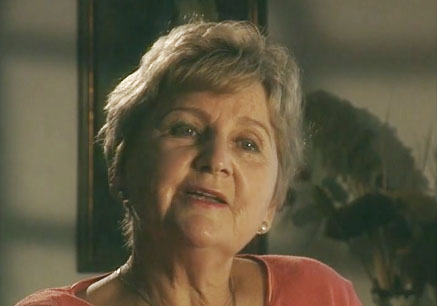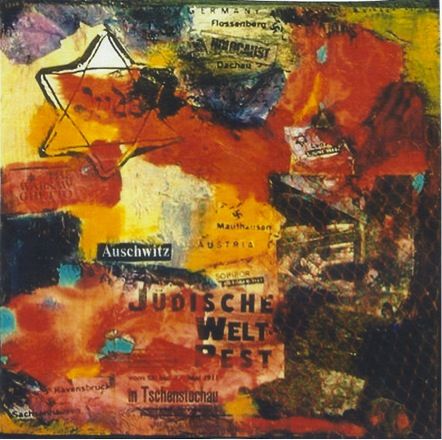
Judith Goldstein
Watch Judith Goldstein’s full testimony from the Visual History Archive as part of Comcast’s Days of Remembrance: PastFORWARD broadcast April 15-June 1, 2015.
From her childhood in Vilna, Poland, to her adult life in the United States, the arts have rarely been very far from Judith Goldstein.
Judith was born in 1932 and lived happily with her parents, brother Meir, and extended family in Vilna, which was nicknamed “the Jerusalem of Lithuania” because it was a center of Jewish life and culture in Eastern Europe. In June 1941, however, everything changed when the city was bombed and occupied by Nazi Germany. A few months later, the Goldsteins were forced to move into a small apartment in the Vilna ghetto; though Judith, Meir and their parents made it there safely, the rest of the family was taken to the forest outside Vilna and shot.
The Goldsteins were able to survive in the ghetto for a time because of her father’s profession as an engineer, which gave him and his family protection as an “Important Jew.” During one bombing, they hid in an underground bunker. Still, in her testimony, Judith recalls many musical performances in the ghetto and sings a song she heard there.
When the ghetto was liquidated in 1943, Judith and her mother were separated from Meir and her father. Though Judith was selected to go with the other children to be killed, she was able to sneak with her mother and aunt on a transport to Kaiserwald, a camp in Riga, Latvia. From there, they would eventually go to Stutthof in Germany and then Torun, Poland.

Throughout her time in the camps, Judith battled illness, harsh beatings, extreme cold and starvation. At the end of the war, during a death march, the German soldiers marching Judith and the other prisoners suddenly disappeared, so Judith and her mother ran and hid in the chimney of a nearby house. They were liberated by the Red Army in winter 1945.
Judith, her mother and aunt went to Lodz, Poland, where they reunited with Meir and found out that their father had not survived the war. They settled in a displaced persons camp in Germany for a few years, where Judith was able to go to the Offenbach Conservatory of Music and study piano. In 1949, they immigrated to the United States.
After marrying and having two children, Judith decided to devote herself to her artistic career. She received a college degree in music and became a music teacher and composer. She also became a certified art therapist and painter. She says her music and art are inspired by her memories of her childhood and help her reconstruct the good and bad times. Her work has been displayed in galleries and museums around the world.